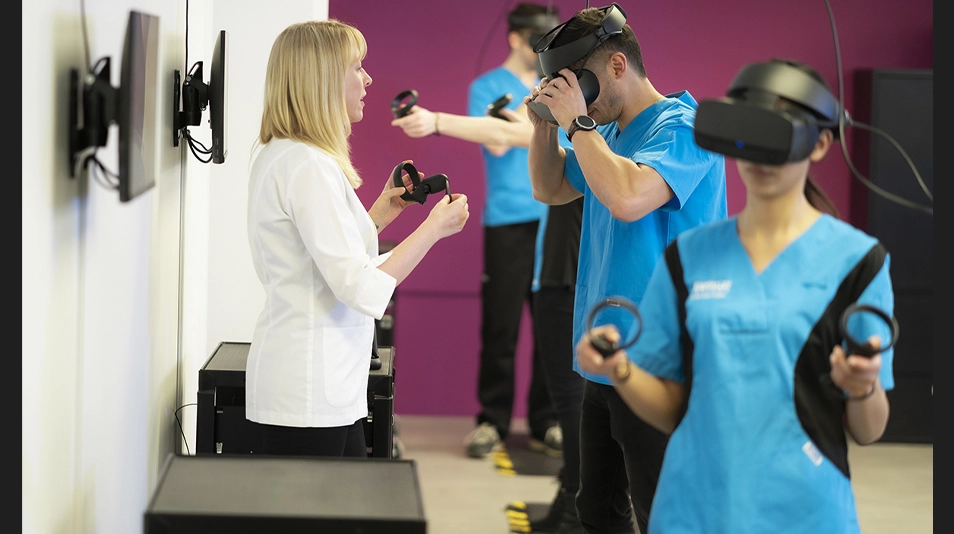
Bow Valley College (BVC), a post-secondary institute based in Calgary, AB, offers a well-regarded Practice Nurse Diploma program that trains students looking to get into a career in professional nursing care. This five-term program includes several practicum components where students are placed into different medical/health care workplaces to help transfer their classroom learning into on-the-job experience. The goal of this diploma is to prepare students for their nursing career immediately upon graduation.
As such, they were looking for a classroom-based solution that would give their students more hands-on experiences for assessing patients. This is a difficult logistical challenge for the faculty; students can perform assessments on other people as practice, but there is no guarantee that the person they are assessing has any ailments or sicknesses they can identify. They do utilize some aspects of simulation, including prosthetic mannequins, but these are quite costly to purchase and replace over time, so they are mostly used for assessments. This led them to consider utilizing virtual reality to enhance their teaching and better prepare their students.
BVC’s team partnered with The Learning Network (TLN) to create a VR concept, and eventually a finalized XR learning module, based on working through a patient assessment process. There are several types of ailments and symptoms that a student can work through, including those associated with lungs, the cardiovascular system, and EENT (ears, eyes, nose, and throat). There are also diverse patient avatars that can be selected or randomized, varying in age, sex, and ethnicity, which require the learner to consider different risk factors. Learners are given several different tools in the digital environment, such as a flashlight, stethoscope, and otoscope, that assist them in diagnosing their virtual patients. A randomized assessment mode was also created where learners are given a scenario with a unique patient and no initial indication of what malady they need to assess. This allows the learners to participate in a more realistic patient assessment that better prepares them for assessing a patient in a real medical setting. The resulting VR program is known as PatientAssessment VR.
This VR training program immediately showed positive responses from students and instructors. Students report that they feel better prepared, not only for their in-class assessments, but for performing patient assessments in their practicum placements. It also gives them an opportunity to experience the feelings and emotional responses they may encounter during private and sensitive medical procedures. The VR classroom labs that BVC uses for this training module allow instructors to observe a student’s skills and process and provide feedback they can use to improve. And the ease of being able to repeat the VR module as many times as needed helps students be better prepared faster than before. BVC faculty indicate that the use of PatientAssessment VR has greatly improved student preparedness going into their first practicum placement. It also reduces the need for BVC to spend a great amount of money on purchasing the equipment needed for in-person simulations, which is a great cost saving and return on investment in the long term.
For more information on the PatientAssessment VR solution, head to our PatientAssessment VR page or contact us with any questions you may have.
Leave a comment
You must be logged in to post a comment.

